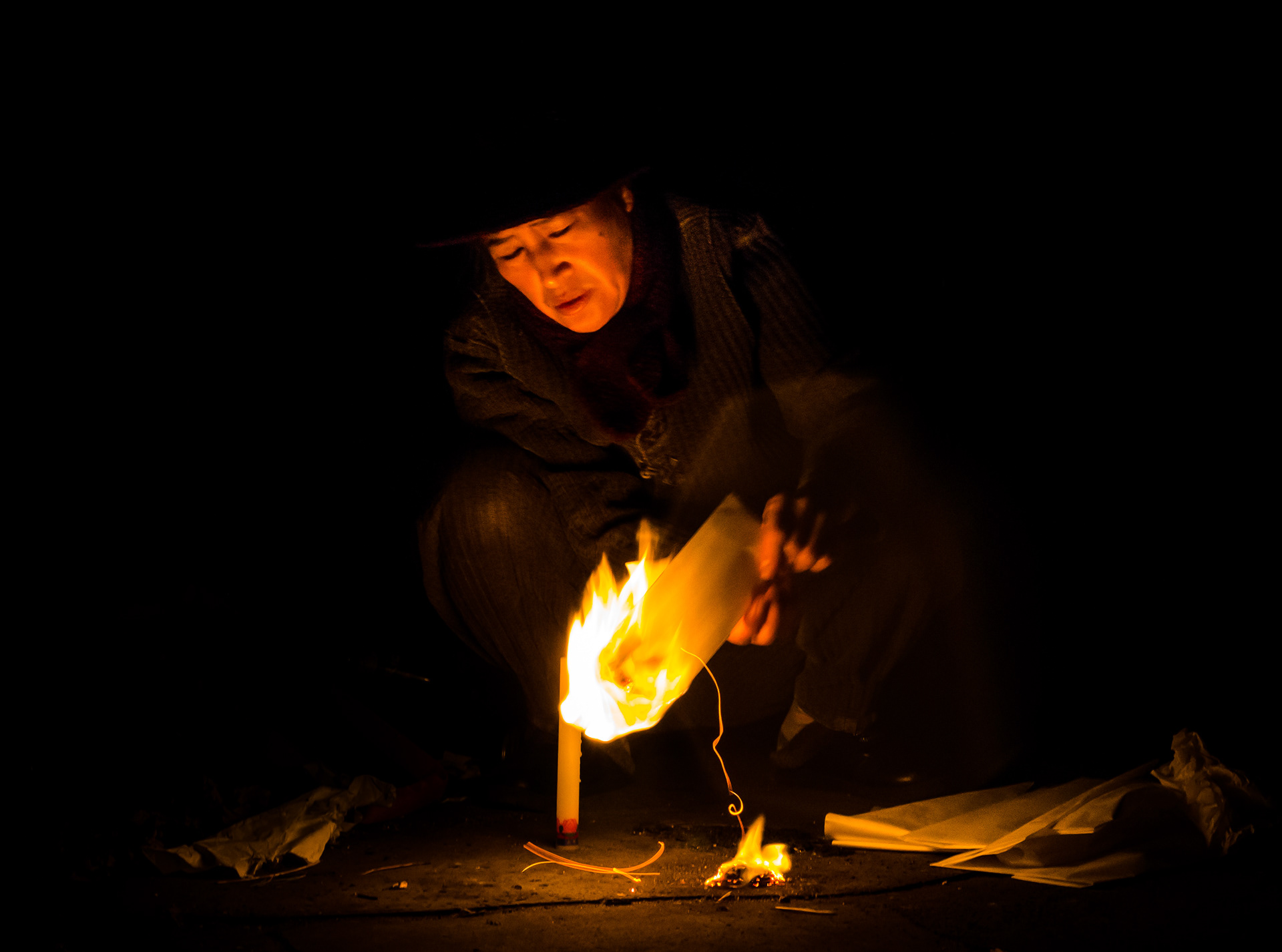Before daybreak, on traditional festive days—such as tokkinal, the day of the rabbit—village women gather at the shamanic shrine in Darakut Village, to offer tribute in the form of food, drink and brightly-colored material—cloth and thread. They offer paper money, which they burn to ensure passage of the dead to the afterlife. Upon my arrival to the shrine, I hear whispers in the dark.
“The foreigner has come again. He’s come on the day of the rabbit.”
At first, along the curving path leading to the shrine, no one speaks to another, not until they have first greeted the gods, the Grandmother, the Grandfather, the Empress of Silver Bowls and Bronze Cups and the infant goddess, who they offer water in place of alcohol. They pack tidy paper lunch-boxes for the infant, so that she may eat well in their absence. The women scatter rice, to stave off ill-fate, leaving some strewn about the floor of the shrine for the magical creature that is said to live therein. Shamanic shrines and their deities play a special role in all Jeju Island villages. Each shrine is unique, with slightly different ritual etiquette.


After day break, the women break plates, cups and bowls against the ground. Some say this act ensures that children will avoid bad behavior during their formative years. Nowadays, some of the women throw a metal or plastic bowl on the ground, symbolically shattering it, but then carry it home. Some years ago, antique collectors came to the shrine and pilfered these ritual artifacts.
Ritual offerings, paper, colorful cloth and thread hang in the shrine trees.
Carrion crows appear overhead. Soon they will gather near the shrine.
Darakut's remaining shrine tree—a Korean hackberry. Towering over the village, it is four-hundred years old.
After serving the gods, the village women remove the offerings from the altar and make a breakfast of them. They share liberally, and we are all blessed eating the sacred food which the gods took from first. The rice cakes and buckwheat cakes, round like the sun or moon, are no longer steaming, but the rice cakes are still soft; the buckwheat is crisp. The unsalted cakes, wrapped like a taco with fish inside, make for a nice combination. I have visited many of the women who regularly visit the shrine in their homes, so I am invited into the conversation. Some I have visited many times. I am a source of fascination for them, and they also appreciate my work, knowing they are likely the last generation to practice shrine shamanism.
The women perform gosiri or gosirae, the practice of tearing small pieces off of the offerings. They discard the pieces for the birds, who are thus drawn away from the gods' altars. The left-over portion of offerings will rot away with the elements or be consumed by other critters who visit the shrine. After the offering process is complete, the women normally build a small fire and remain socializing for some time, warming their hands. But today, it begins to pour rain. Some of the youngest women in their numbers, in their fifties, take photos with their phones of the offerings on the altars, just as they would at any other holiday table or social gathering.
Offerings atop a stone altar with bits discarded during the act of gosiri.
Latecomers arrive after daybreak. In the rain, they start the offering process anew.
As the shrine-goers begin their departure, increasing numbers of crows, smaller birds and even pheasant come for their fill of offerings—discarded, in part, for them. The crows wait patiently nearby, but become more expressive as they grow in number. The bravest, or most impulsive amongst them, begin to snag up pieces of food offerings. Once they have the shrine to themselves, they will rush in to grab the larger pieces of what is left. Other birds move in more gingerly, only after their more aggressive cousins have departed.
A carrion crow makes off with a boiled egg.
Spreading rice in the cardinal directions.
Tying offerings to the Grandmother Goddess's tree.